Divya N writes about a jewellery made with herbs that protects children from harm.
(A message to the reader.)
Imagine walking into a store to purchase “the herb that must not be named.” Chances are that you will return empty-handed if you cannot name what you want. However, when I visited a country medicine store in Chennai, India, the storekeeper asked me if I wanted the herb as a root or as jewellery. That herb is known in the scientific community as Acorus calamus. I know it as Vasambu (வசம்பு in Tamil), the wonderous child-rearing herb, the “pillaivalathi.” Vasambu is never referred to by name, especially after sunset, since it is considered to have magical properties.
Referred to as sweet flag in English, Vayambu in Malayalam, Vacha in Hindi, this herb as a rhizome (root) features in several home remedies. At first sight, the brown herb looks nondescript, like a stick you might find on the roadside. There is no outward indication of its antidiarrheal, insecticidal, antispasmodic, metabolism-boosting, or calming properties. It makes you wonder how such an ordinary-looking herb can have such extraordinary qualities.
Thenum
In my family, every newborn receives a gift box with herbs and jewellery. As a child, I remember using the names of the herbs on that list as a tongue twister. Kadukkaai (chebulic myrobalan), jaadikaai (nutmeg), maasikaai (gall nut), sukku (dry ginger) and vasambu (sweet flag). The gift box would have an intriguing assortment of jewellery such as a Paal paasi (a seed bead necklace), karu valayal (black glass bangles), thandai kaapu (twisted metal bands used anklets or wristlets), a black cord to string charms, and a vasambu korvai (bracelet). A shiny metal container filled with Vengai pottu, collyrium made using the sap of the Vengai tree, is a crucial part of the gift. As the items protect the baby from insect bites, the common cold, colic pain, and evil eye, they are considered precious.
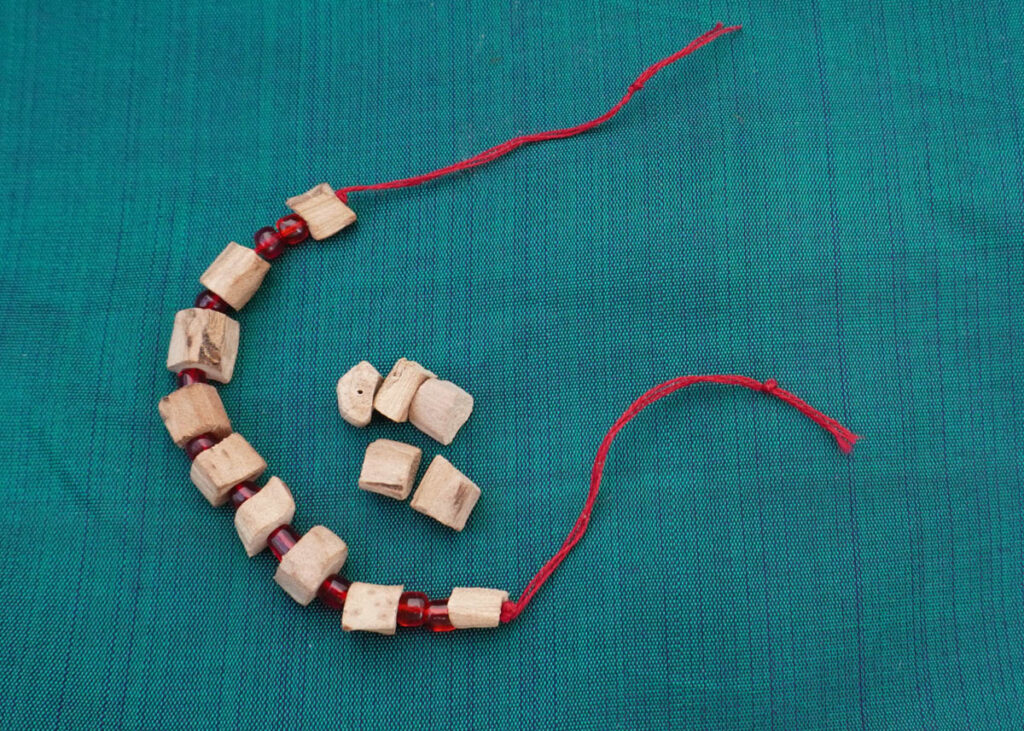
Vasambu bead bracelet with red glass seed beads strung on a cotton cord; bracelet and photo by Divya N
Though the vasambu bead bracelet looks unappealing, its value comes from its positioning as an amulet. The dried herb is thick and hard. Hence, it is soaked in water, peeled, and cut into quarter-inch beads. A yellow or red thread is used to string the beads. As more and more adults wear the bracelet as an amulet, glass beads in red or black are used as spacers, adding colour to the bracelets.
The tying of the vasambu bracelet is a ritual in itself. The new mother opens the box sixteen days after the birth of her child and ties the vasambu bracelet to the child’s wrists. Vengai pottu is applied on the child’s forehead and cheek and is used to line the eyes. Together, they repel the evil eye and symbolise the mother casting a protective net around her newborn. While the fragrance of the vasambu keeps insects away from the baby, sucking on the beads helps with teething. The bracelets are carefully monitored to prevent the babies from overdosing on the herb. It is replaced once the baby chews halfway through any of the herbal beads.
Vasambu dipped in water tastes like dry ginger. It is pungent. There is a strong aftertaste: a bitterness similar to the rind of a lime. Your tongue and gums turn slightly numb like you have been chewing cloves. A subtle lemony fragrance turns smoky as you char the herb to repel insects. Due to its potent nature, vasambu must be consumed in carefully measured quantities. Adults can chew a chickpea-sized portion of the herb to help with indigestion and stomach pain. Tea made using vasambu powder, water, and honey is an alternative for those who feel nauseated by the aftertaste. However, these remedies are unsuitable for children. Charred vasambu is rubbed on a stone with other herbs to create a special medicine for them.
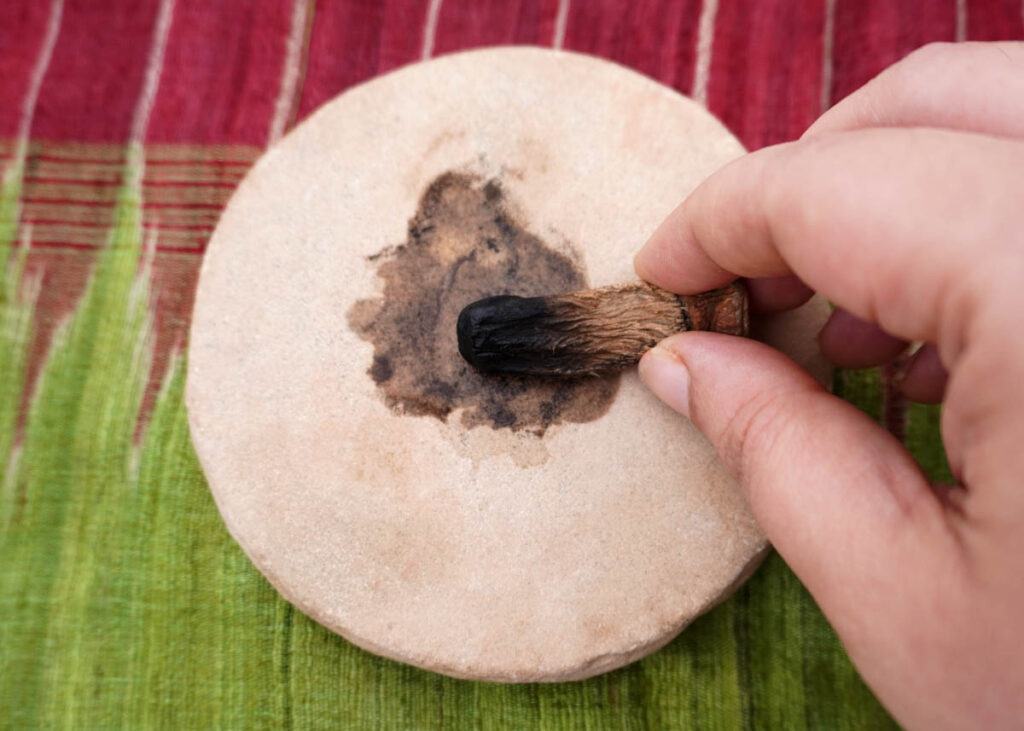
Charred vasambu being rubbed on a stone – Urai kal. The amount of medicine shown in the photo is for representative purposes only and is not the recommended dosage; photo: Divya N
I asked an elderly woman how to prepare the mixture, and she scoffed at me. She blamed my entire generation for being “so modern” that we did not know how to mix the traditional medicine or “Urai marundhu.” I assured her that I was aware of the concoction and possessed a Urai kal (traditional rubbing stone used to rub spices and herbs). Eventually, she mellowed. As our conversation progressed, she gave me her recipe for the medication and the method of administering the paati vaithiyam (grandmother’s treatment).
“A swipe of nutmeg, a swipe of gall nut,
A swipe of sweet flag, a swipe of myrobalan,
Soaked in oil and charred in flame, rubbed one after the other on stone.
Use mother’s milk for a child below six months and water for an older child.
Mix, Mix, Mix, and blend with your index finger.
Put a dot on the tongue and another on the forehead. Two on the soles of the feet. End by drawing a circle around the belly button.
Given twice a week, this Urai marundhu is a panacea that will protect the child from harm,” she concluded.
The warming taste of vasambu reduces colic pain and improves appetite in babies. It also helps the baby sleep through the night. Older children who suffer from speech delays are given a pinch of vasambu powder mixed with honey. It is also believed to make the voice sweeter as adults. The 1981 Malayalam song, Thenum Vayambhum (honey and sweet flag) from the movie of the same name, references this attribute of vasambu.
In Tamil Nadu, vasambu exists at the intersection of medical, social, cultural, religious, and personal beliefs. The word itself translates to “the one that attracts.” It is a magical tool that can help you manifest your goals. Some believe it will make them richer, help create better relationships, and bring fame and success. The herb is, therefore, shrouded in secrecy and must not be named, especially after sunset.
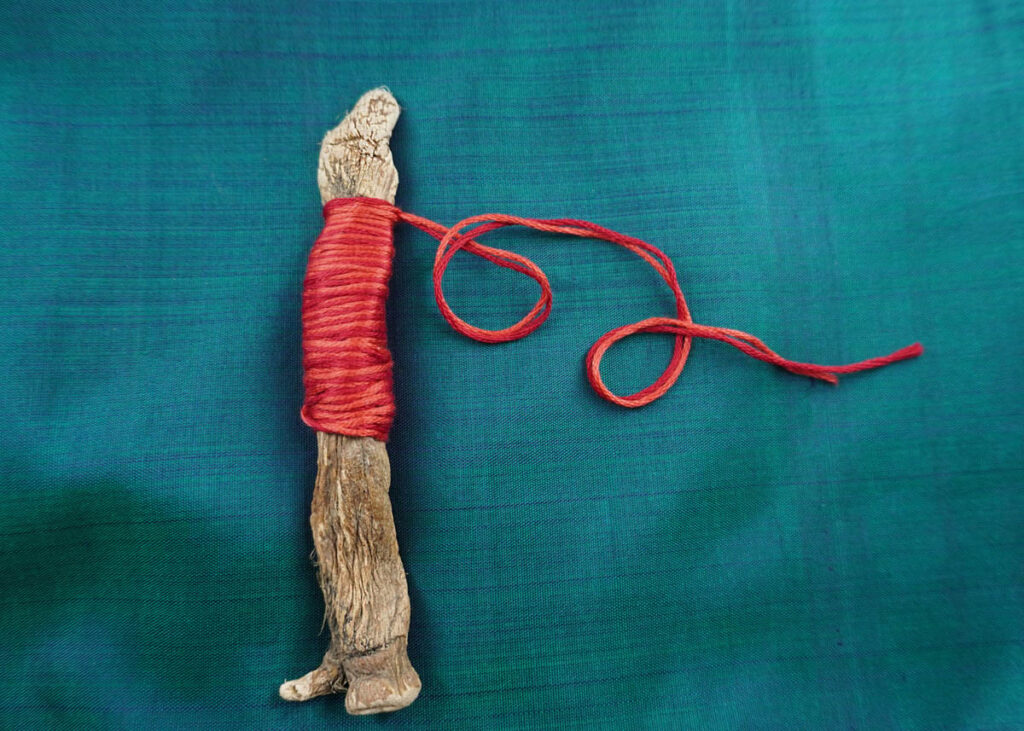
Red thread. Photo by Divya N
Out of the several manifestation rituals that exist, there are two that follow resonate the most with me. At four in the morning, you bathe, dress, and meditate in a quiet space. Holding a piece of vasambu in your hands, close to your chest, you state your objectives. You then tie a length of red string around it and keep it close to a place or object connected to your goal. Personify the herb and talk to it as you would talk to a friend, to remind yourself to stay committed to your goal until you achieve it. In the second method, you char a piece of the herb by exposing it to a burning cotton wick doused in gingelly or castor oil. Use it like a pencil and write what you want to manifest. Read what you have written every day until your manifest your desire.
When I asked the elders in my family about this practice, I was warned. “Be careful what you wish for,” they said, “using it for unlawful gains would have repercussions.”
Throughout my life, I was told that Vasambu increases appetite and decreases flatulence, nausea, and stomach pain. It works as an expectorant and acts as a mild sedative. Further, it is used to prepare antidotes for poisons and cure diseases caused by parasitic worms. Therefore, I was shocked to learn that vasambu is considered dangerous and potentially toxic by western science.
Vasumbu is a medicinal herb and must be treated as a medication. You can reap the benefits by preparing it correctly and ingesting the accurate dosage at specified times. However, it will cause harm if consumed daily in large quantities. If in doubt, consult a traditional medicine practitioner before consuming it.
As my mother says, “Alavukku meerinaal amirthamum nanju” (consumed excessively, even the elixir of immortality can be poisonous). How can vasambu be any different?
Further Reading
“Calamus: Overview, Uses, Side Effects, Precautions, Interactions, Dosing and Reviews.” WebMD.
“Sweet Flag Agrotechnology.” n.d. TIMEIS.
Shetty G, Raviraja & Shruthi, A.M. 2015. “A review on pharmacology of Acorus calamus – An endangered medicinal plant”. International Journal of Pharma and Bio Sciences. 6. P605-P621.
VENKATESHWARAN, Ramya. 2022. “10 Top Uses & Benefits of Vasambu (Sweet Flag).” Wildturmeric.
About Divya N
 Divya N is a fashion designer, jewellery maker, design educator, and storyteller living, teaching and making in Chennai, India. She makes mixed-media jewellery under the brand name Sayuri. She exhibited her picture jewellery at the New York City Jewelry week consecutively in 2021 and 2022. Divya works as an Assistant Professor teaching Fashion Communication. Find more on her blog and Instagram page. Visit www.jewelsofsayuri.com and follow @jewelsofsayuri.
Divya N is a fashion designer, jewellery maker, design educator, and storyteller living, teaching and making in Chennai, India. She makes mixed-media jewellery under the brand name Sayuri. She exhibited her picture jewellery at the New York City Jewelry week consecutively in 2021 and 2022. Divya works as an Assistant Professor teaching Fashion Communication. Find more on her blog and Instagram page. Visit www.jewelsofsayuri.com and follow @jewelsofsayuri.

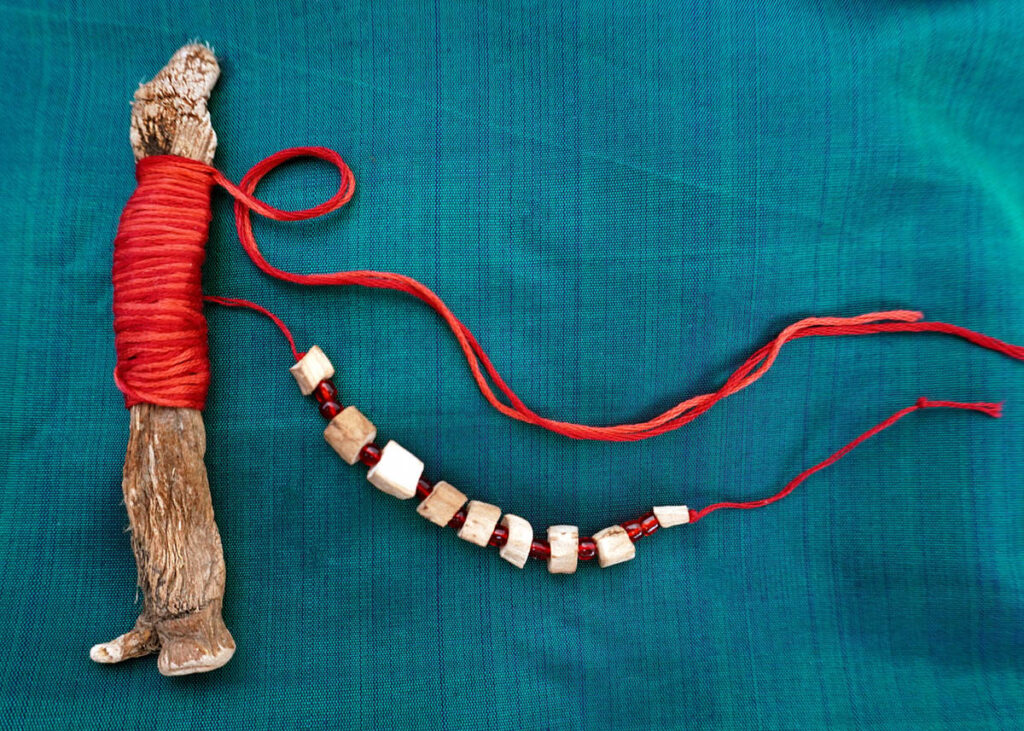


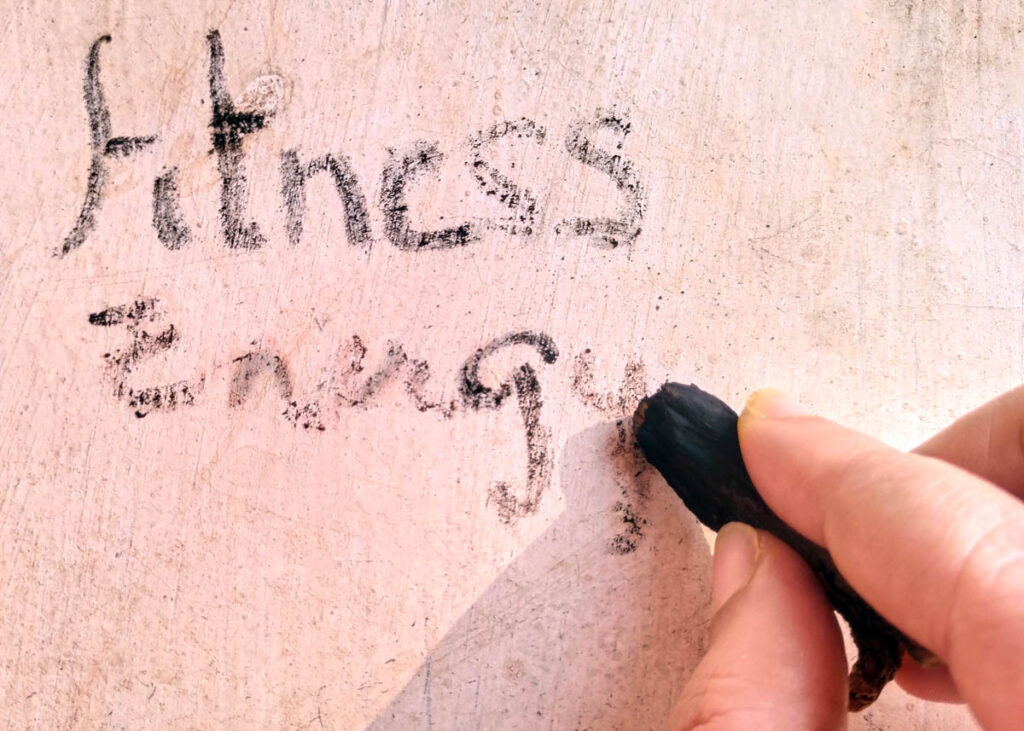

Comments
Very very useful and informative article. Thanks to Divya.
A very nice and detailed article. Photos are quite illustrative and capture traditions…appears quite authentic
I love this. Such a conceptual expansion of what jewellery can be as our many human cultures make meaning of objects placed on our bodies. Thank you.
Wikipedia
“Acorus calamus” if anyone is interested in furthering reading and or links
Thank you
I really like how you’ve articulate the whole piece about vasambu… I was browsing it for using on my baby and I have just read what my paati (granny) told me yesterday… and the I felt like a friend’s narrative. So original and informative.
Thank you for sharing such valuable informations in a simple yet engaging way.
i love this for my child with a speech delay. so amazing and great info thank you
Well explained.thank you
I found this blog after googling vasambu because I had stumbled across the name elsewhere. Very interesting and well written, thank you!